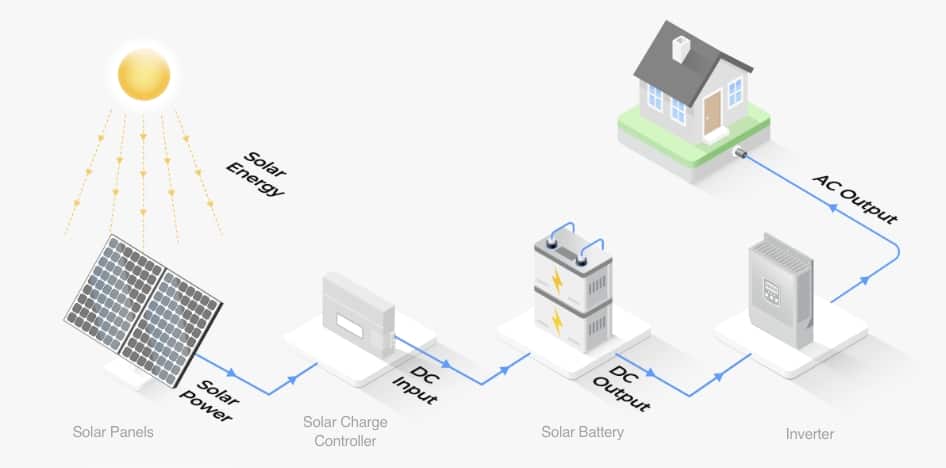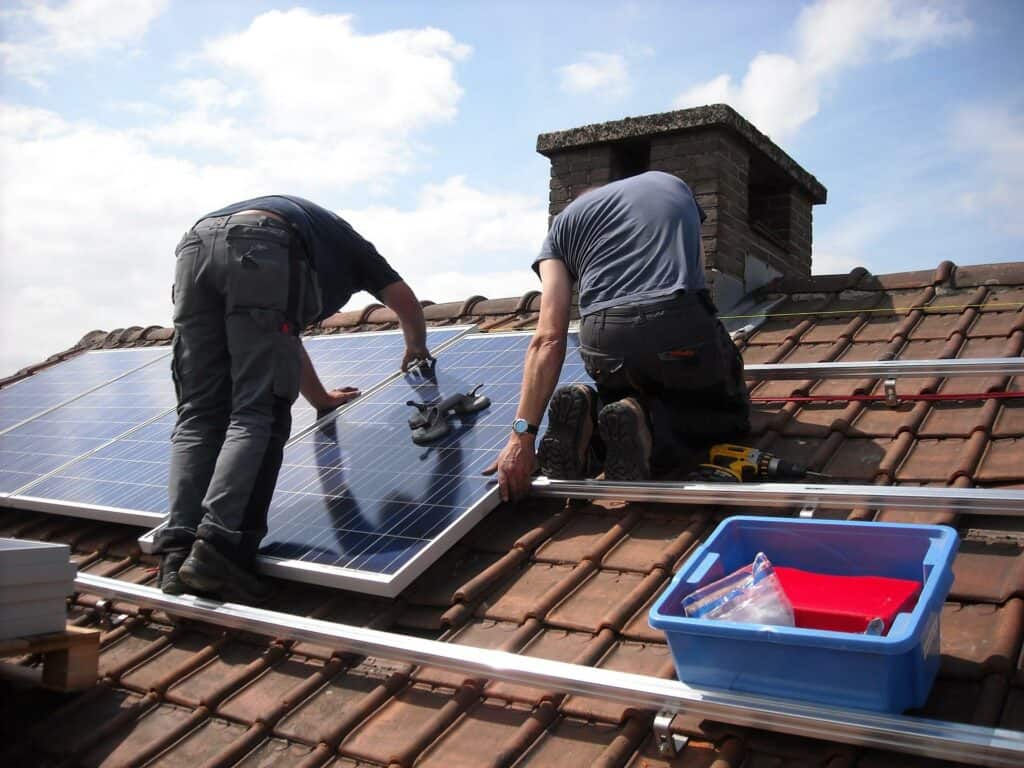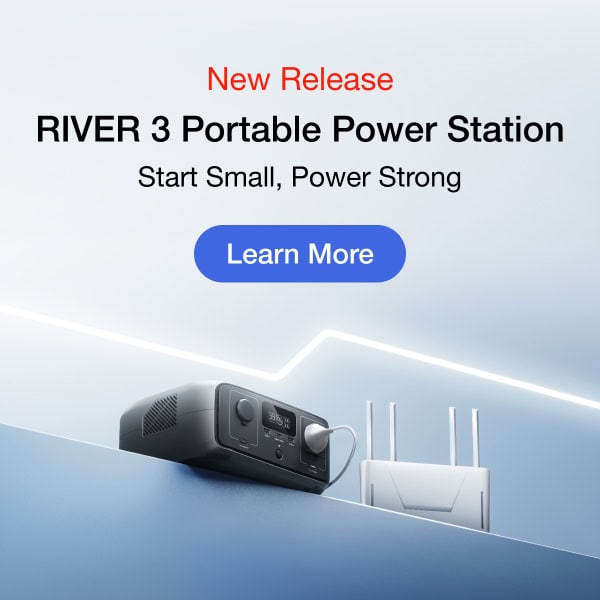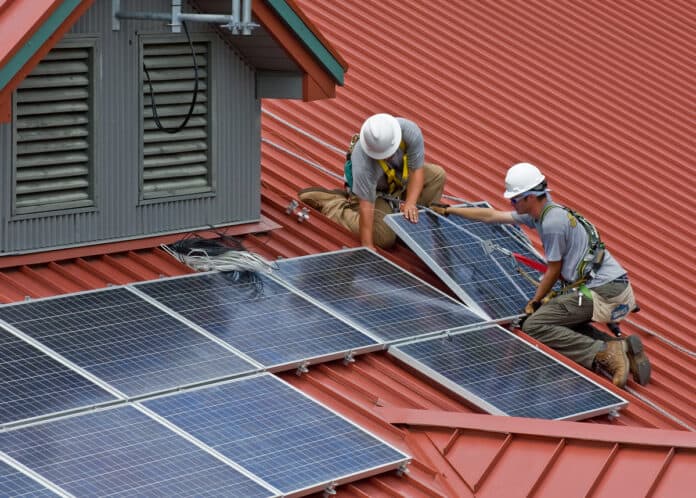In the UK, the demand for renewable energy sources is increasing due to the rising concerns about climate change and its impact on the environment. Solar power is an excellent way for homeowners in the UK to generate their electricity in a clean and sustainable way. Solar panels convert sunlight into direct current (DC) electricity, but as most households use alternating current (AC) electricity, a solar inverter is necessary to convert the DC electricity into AC electricity. In this blog post, we will explain what a solar inverter is, how it works, the different types of solar inverters, and tips on installing solar panels and inverters.
What is a Solar Inverter?
A solar inverter is an electrical device used in solar power systems to convert DC electricity generated by solar panels into AC electricity that is compatible with residential or commercial electrical grids. It also synchronizes the AC power with the mains, ensuring that it can be safely fed back into the grid.
What Does an Inverter Do?
When sunlight hits the solar panels installed on the roof or ground, they generate DC electricity. The solar inverter receives this DC electricity from the solar panels and converts it into usable AC electricity. The process of inversion involves two primary stages. The first stage converts the DC power into a stable DC voltage that can be further processed by the inverter. The second stage involves the inverter converting the DC power into AC power, which is in a form that is usable by households and businesses.

Types of Solar Panel Inverters
There are several types of solar inverters available in the market, each with its unique features and benefits. Here are some of the most common types of solar inverters:
String Inverter
String inverters are the most common type of solar inverter. They work by connecting all the solar panels in a solar array in series, otherwise known as a string. The DC power generated by each panel is combined, and the string inverter converts the DC power into AC power. However, one downside of using a string inverter is that when one panel is shaded or not functioning correctly, it reduces the output of the entire array.
Micro Inverter
Micro inverters are becoming increasingly popular in solar systems. Unlike a string inverter, which connects all solar panels in a series, a micro inverter is installed on each solar panel and converts the DC electricity generated by the panel into usable AC electricity. This design allows each panel to operate independently, increasing the system’s overall efficiency and performance.
Micro inverters also come with monitoring software that enables users to track the performance of individual solar panels and detect any issues promptly. This feature makes maintenance and troubleshooting more manageable, compared to traditional string inverters. Additionally, micro inverters are an excellent option for homeowners who have shading or different orientations on their roof as they can help to mitigate the effects of shading and enable a more flexible solar panel array design.
Hybrid Solar Inverter
A hybrid solar inverter is a type of inverter that combines the functionalities of a traditional solar inverter and a battery storage system. It can convert the DC electricity produced by solar panels into usable AC electricity for household use while simultaneously storing any excess power in batteries. With this design, homeowners can draw on the stored energy during times of high electricity demand, such as in the evening or on cloudy days. This feature can help to reduce the reliance on the grid and save money on electricity bills while also increasing the energy independence of the home.
Hybrid solar inverters are particularly useful for homeowners who live in areas where power outages are frequent or unreliable. They can enable households to maintain power during outages, preventing damage to devices or loss of food from refrigeration. They can also be used by homeowners who want to live entirely off the grid, allowing them to generate and store their electricity independently. Additionally, hybrid solar inverters may be eligible for government incentives, such as feed-in tariffs or tax credits, making the investment more financially feasible for homeowners.
Power Optimisers
Power optimisers are installed on each solar panel and prevent energy loss from shading or panel mismatch. They optimize the DC output from each panel and send it to the string inverter for conversion into AC power.
Off-Grid Inverter
An off-grid inverter is used in standalone solar systems, where solar panels are the primary source of power, and there is no grid connection. These inverters typically have a built-in battery charger to store excess power generated during the day for use at night.
How to Install Solar Panels and Inverter
Installing solar panels and an inverter at home can be an effective way to reduce your carbon footprint and electricity bills. Here are some tips on how to install these systems correctly:
- Determine the location of the solar panels and inverter: Before installation, it’s crucial to determine where the optimal location is for the solar panels and inverter. Solar panels should be installed in an area that receives maximum sunlight. The inverter should be installed in a well-ventilated area with adequate space for air circulation.
- Mount the solar panels: Install the solar panels securely on the roof or the ground, using mounting brackets suitable for the type of panel and location.
- Connect the panels: Connect the panels together and run the wiring through the roof or ground to the inverter.
- Install the inverter: Install the inverter on the wall in a well-ventilated area, following the manufacturer’s instructions.
- Connect the inverter: Connect the inverter to the panels and the AC mains, following the manufacturer’s instructions.
- Test the system: Once the system is installed, test it to ensure that it is working correctly. You should consult a licensed electrician or a solar installer to install the solar panels and inverter.

FAQs
A solar inverter is an electrical device that converts the DC electricity generated by solar panels into AC electricity that is compatible with residential or commercial electrical grids.
Some of the most common types of solar inverters are string inverters, micro inverters, hybrid solar inverters, power optimisers, and off-grid inverters.
A micro inverter is a type of solar inverter that is installed on each solar panel and converts the DC electricity generated by the panel into usable AC electricity. By contrast, a string inverter connects all solar panels in a series and converts the DC electricity generated by multiple panels into usable AC electricity.
Micro inverters can improve the overall efficiency and performance of solar power systems by allowing each panel to operate independently. They are also useful for homeowners who have shading or different orientations on their roofs and can be more effective in mitigating the effects of shading.
Installing an inverter for your solar panels requires careful planning and compliance with local regulations. It’s best to consult with a licensed electrician or solar installer to ensure proper installation to prevent any safety issues or damage to your property or equipment.
Solar inverters should be installed in a well-ventilated area, ideally outdoors or in a garage or storage shed. However, if no suitable outdoor or garage location is available, inverters can be installed indoors in a well-ventilated area with adequate space for air circulation.
How do I maintain and troubleshoot my solar inverter?
Regular maintenance is necessary to ensure that your solar inverter is functioning optimally. It’s essential to clean and inspect both the solar panels and the inverter regularly. Additionally, most inverters come with monitoring software that enables you to track the system’s performance and detect any issues promptly. If you experience any problems with your inverter, it’s best to consult a licensed electrician or solar installer for troubleshooting and repair.





